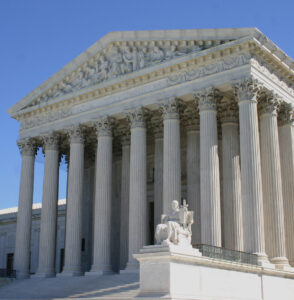First published by Safety+Health an NSC publication

Scott Keller, attorney for the National Federation of Independent Business, presented the question in a response to questioning from Justice Stephen Breyer early in the two-hour hearing. “You said the question is, ‘Who decides?’” Justice Elena Kagan said to Keller later in the hearing. “I think that’s right. I think that is the question.”
Kagan contended in her questioning that OSHA has experts on workplace safety and is politically accountable to the public via the election of presidents and representatives in Congress.
“Courts are not politically accountable,” she said. “Courts have not been elected. Courts have no epidemiological expertise. Why in the world would courts decide this question?”
Keller and Ohio Solicitor General Benjamin Flowers contended that Congress didn’t give OSHA clear authority to address vaccinations in the Occupational Safety and Health Act of 1970. The duo also argued that states and private businesses can decide how to protect workers from COVID-19.
Chief Justice John Roberts expressed similar thoughts to U.S. Solicitor General Elizabeth Prelogar, who was arguing on behalf of the government.
“It sounds like the sort of thing that states will be responding to, or should be, and Congress should be responding to, rather than agency by agency of the federal government and the executive branch acting alone.”
Justice Sonia Sotomayor mentioned that “certain states … are stopping employers from requiring vaccines” and masks.
“Why shouldn’t the federal government, which … Congress has decided to give OSHA the power to regulate workplace safety, have a national rule that will protect workers?” she asked.
Reading from the OSH Act, Sotomayor noted that Congress gave OSHA the authority to develop “innovative methods, techniques and approaches for dealing with occupational health and safety problems.”
Prelogar pointed to Section 20(a)(5), which reads: “Nothing in this or any other provision of this act shall be deemed to authorize or require medical examination, immunization, or treatment for those who object thereto on religious grounds, except where such is necessary for the protection of the health or safety of others.”
‘Major questions’ doctrine
The argument over the “clear authority” from Congress is important because it’s at the heart of what’s known as the “major questions” or “major rules” doctrine, which has been used in recent Supreme Court cases. That doctrine typically is reserved for regulations involving significant political or economic considerations.
OSHA has stated that the ETS, which would be applicable to employers with at least 100 employees, would cover 84 million workers, or around two-thirds of private-sector workers. Keller claims the rule could lead to billions of dollars in costs and between 1% and 3% of workers leaving their jobs.
The “major questions” doctrine typically also involves the nondelegation doctrine, a principle stemming from Article I of the Constitution, that Congress cannot delegate its authority to other entities. Therefore, under that doctrine, if Congress hasn’t explicitly permitted an agency to take an action, the courts must strike down that action.
Like Kagan, critics say the “major questions” doctrine puts administrative decisions into the hands of unaccountable judges. That doctrine is also a reversal from what’s known as the Chevron Deference.
That legal test set forth by the Supreme Court in a 1984 decision held that the judiciary was supposed to defer to agencies as long as its actions were deemed reasonable and as long as Congress hadn’t clearly addressed the particular issue at hand.
Possibility of a stay
Breyer and Justice Samuel Alito asked all three lawyers about a short-term administrative stay of the ETS to give the court time to decide before OSHA begins enforcement of its ETS.
One of the agency’s two key dates has passed without the court weighing in. The other is Feb. 9.
“OSHA will not issue citations for noncompliance with any requirements of the ETS before Jan. 10 and will not issue citations for noncompliance with the standard’s testing requirements before Feb. 9, so long as an employer is exercising reasonable, good-faith efforts to come into compliance with standard,” the agency has stated on its website.
Alito asked Prelogar if the federal government objected to the court “taking a couple of days” to consider the ETS.
“These cases arrived at this court just a short time ago,” Alito said. “They present lots of difficult, complicated issues. We have hundreds of pages of briefings. We’re receiving very helpful arguments this morning.”
McCraren Compliance offers many opportunities in safety training to help circumvent accidents. Please take a moment to visit our calendar of classes to see what we can do to help your safety measures from training to consulting.